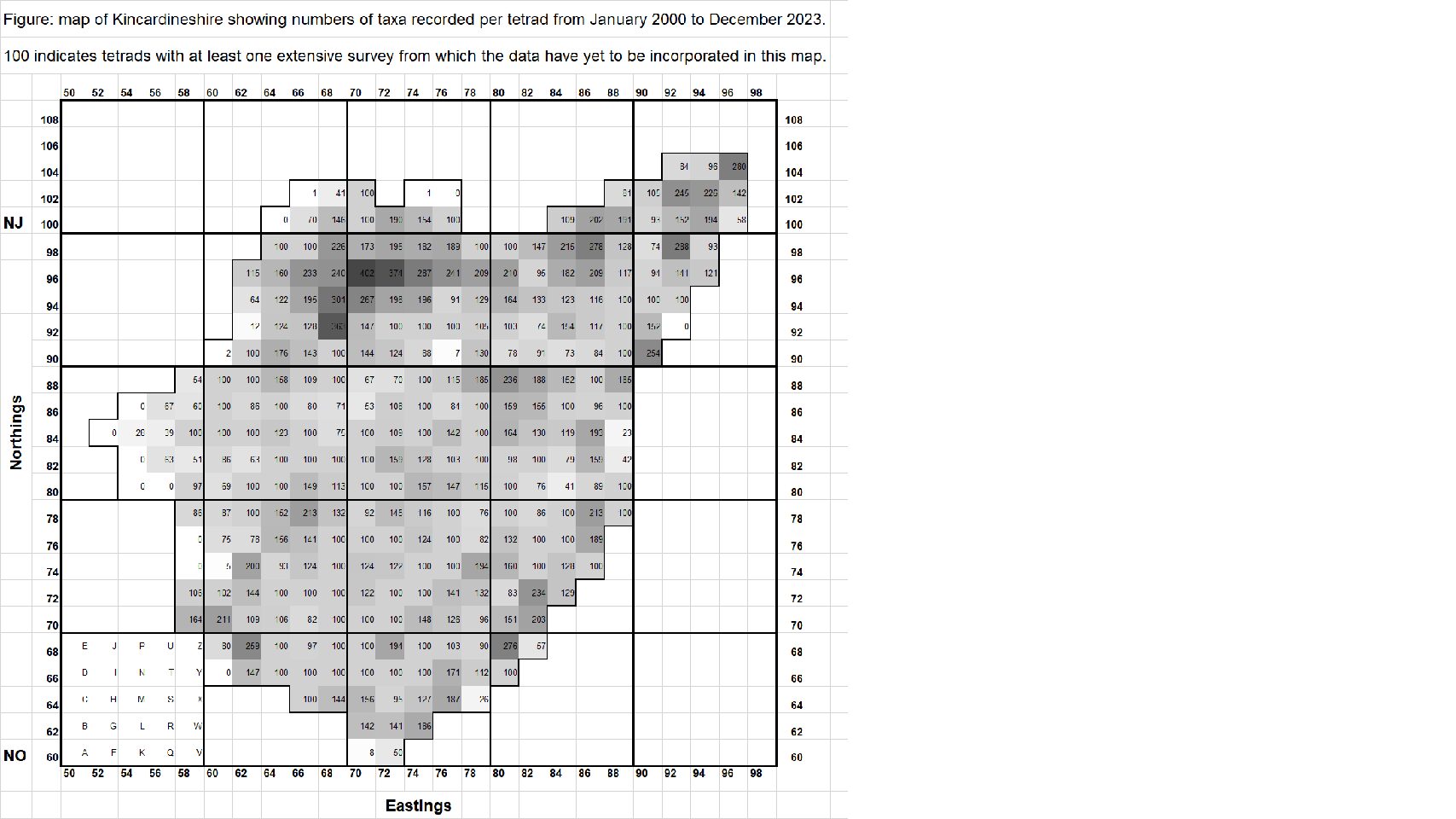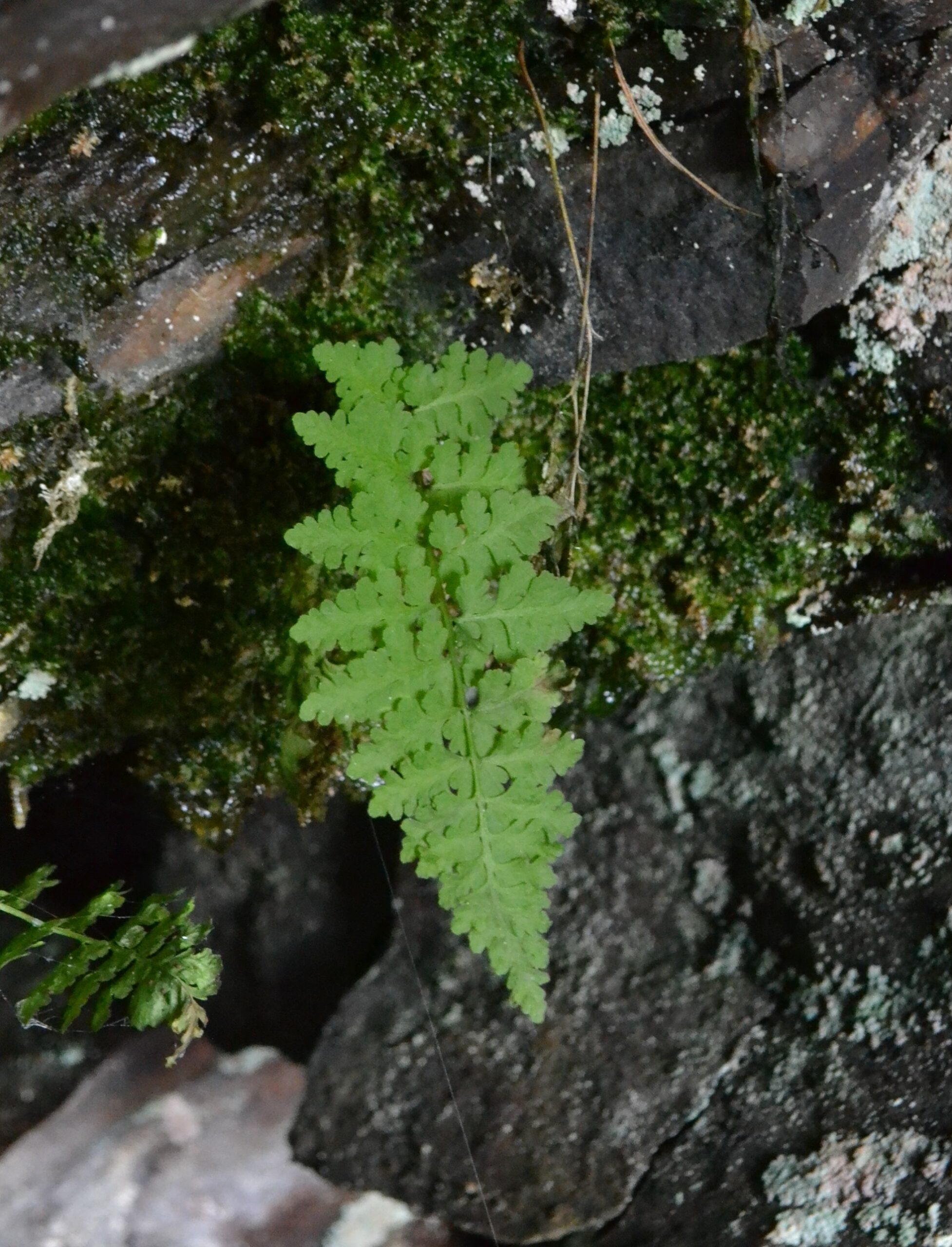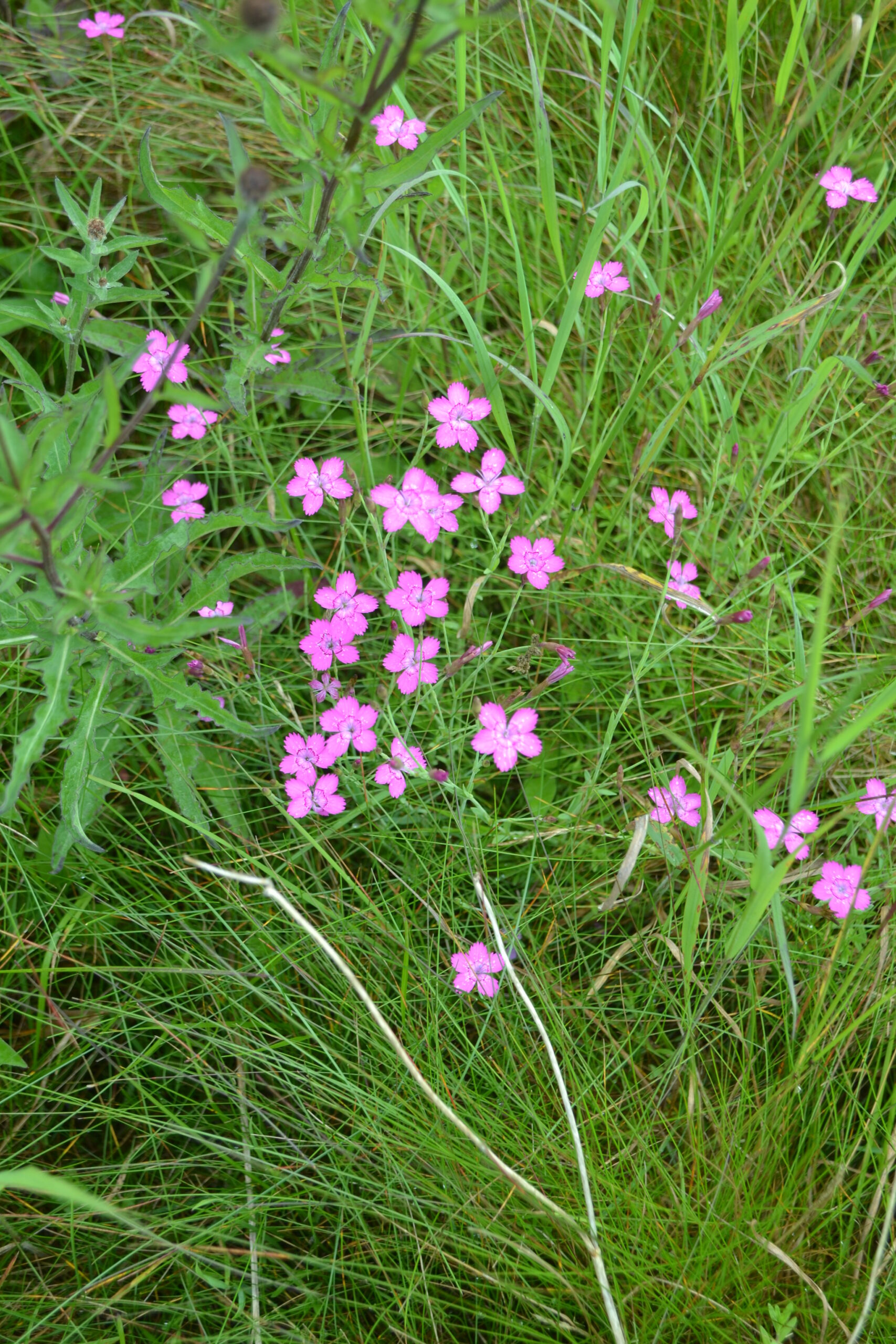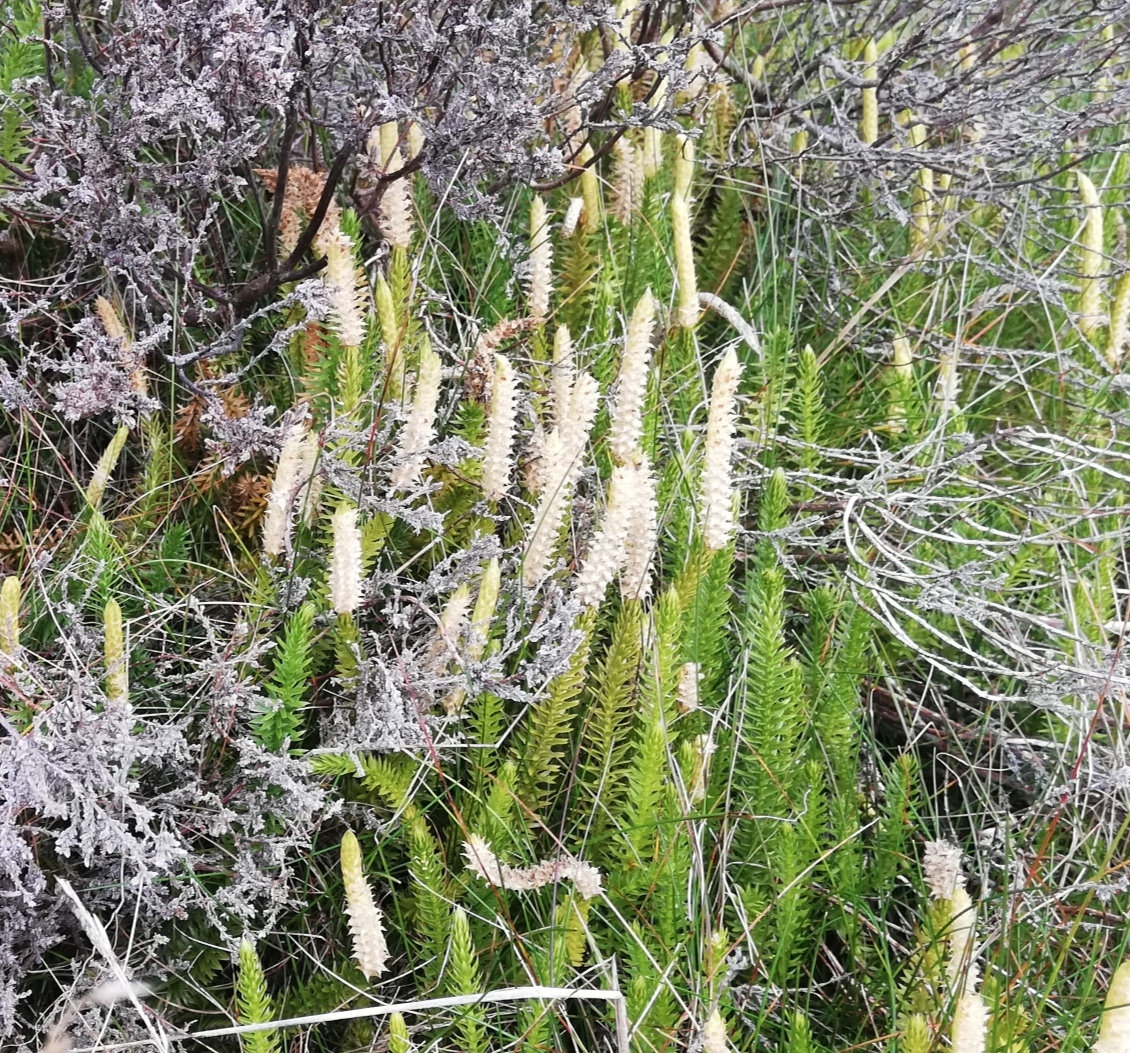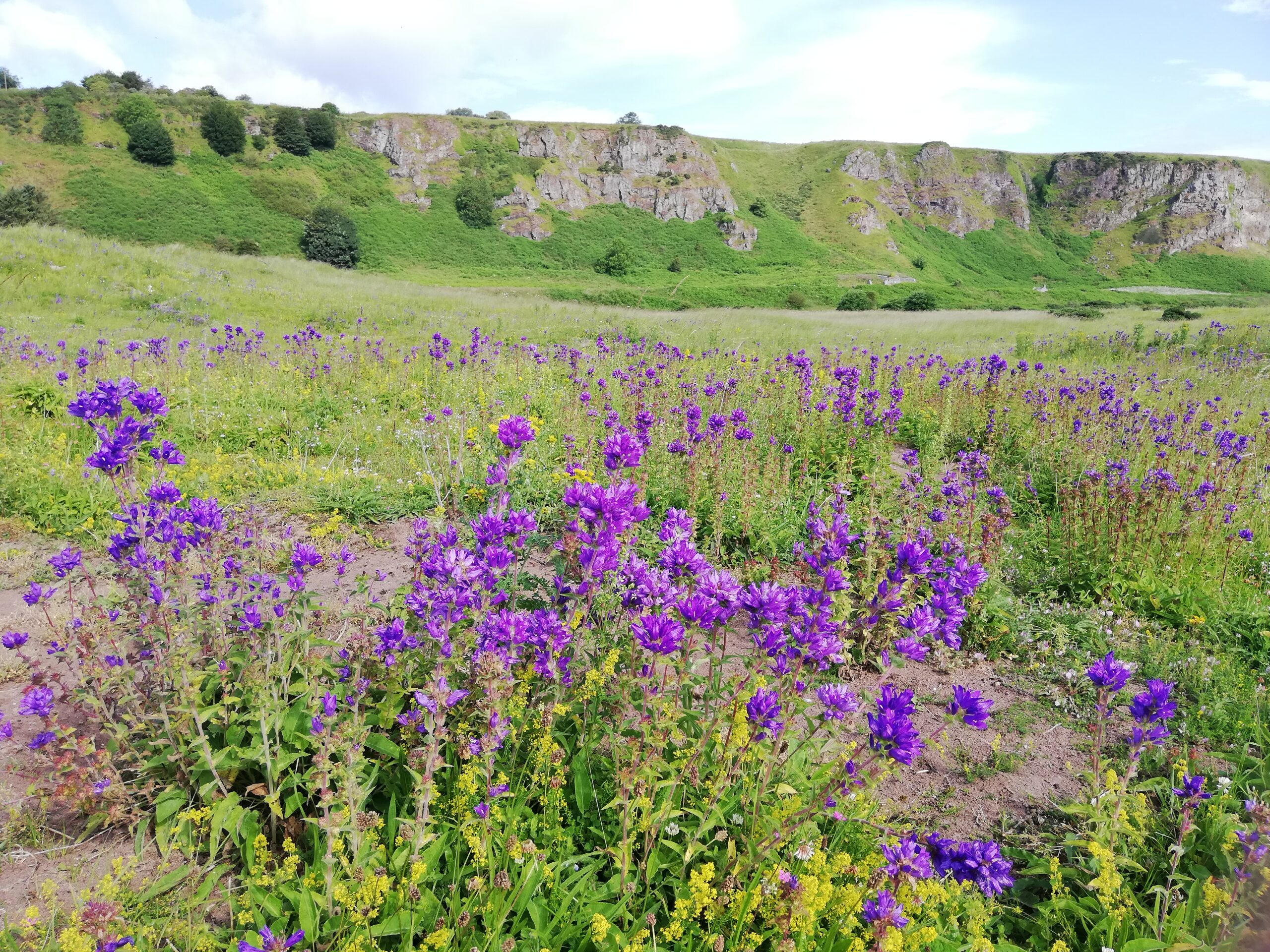
Although a small vice county, with an area of just under 1000 km2, Kincardineshire has an interesting flora with a particularly strong set of historical records documented in:
Dickie, G. 1860, The Botanists' Guide to the Counties of Aberdeen, Banff and Kincardineshire. A. Brown & Co., Aberdeen, 344 pp; and Trail, Katharine E. (Ed) 1923, James William Helenus Trail: A Memorial Volume. Aberdeen University Press, 331 pp.
The richest botanical site in Kincardineshire is St Cyrus NNR where, due to its varied geology and warm micro-habitat there are species growing at, or close to, their northern limit in the British Isles. These include Silene nutans (Nottingham Catchfly), Viola hirta (Hairy Violet), Trifolium scabrum (Rough Clover), Campanula glomerata (Clustered Bellflower), Carex spicata (Spiked Sedge) and Artemisia maritima (Sea Wormwood).
Elsewhere can be found:
- sea caves, with Cystopteris dickieana (Dickie's Bladder-fern) (image above right);
- coastal heaths and grasslands, containing important populations of Astragalus danicus (Purple Milk-vetch);
- mesotrophic grasslands and vegetated shingle along the River Dee, where rarely encountered specialities include Platanthera chlorantha (Greater Butterfly-orchid) and Dianthus deltoides (Maiden Pink) (image right);
- wooded dens such as the Gannochy Gorge and Den Finella, which provide refuges for Drymochloa sylvatica/Festuca altissima (Wood Fescue) and Polypodium interjectum (Southern Polypody) (image below right) respectively;
- mosses and fens, dominated by willows and sedges where populations of Carex diandra (Lesser Tussock-sedge) and Corallorhiza trifida (Coralroot Orchid) can sometimes be found;
- upland heaths often dominated by Calluna vulgaris (Heather), on which Lycopodium annotinum (Interrupted Clubmoss) (image bottom right) is well represented;
- isolated outlying populations of mountain plants, such as Cryptogramma crispa (Parsley Fern) growing in abundance at the Slack of Birnie and Cornus suecica (Dwarf Cornel) on Mount Battock.
Kincardineshire Rare Plant Register
Since April 2020, we have been working on a Rare Plant Register for Kincardineshire. The first edition was released in April 2024, and will be periodically updated. The latest edition can be found here along with other publicly available documents about the flora of Kincardineshire.
Current plans
All observations of interesting plants, whether occasional records or offers to help with organised recording, would be gratefully received. Please send these to David Elston.
Kincardineshire is covered by the North East Scotland Botanical Recording Network, which communicates via a WhatsApp group. If you would like to be included in the group, please contact David Elston.
Particular projects with which assistance would be appreciated include:
1) visiting sites in hectads with historical but not recent records of nationally designated species (the SHARPP project), progress in VC91 up to the end of December 2023 can be found here;
2) visiting sites with historical but not recent records of species included in the Rare Plant Register;
3) improving coverage of urban sites for the Urban Flora Project;
4) obtaining species lists from tetrads that have not been well recorded from 2000 onwards (see map below).
